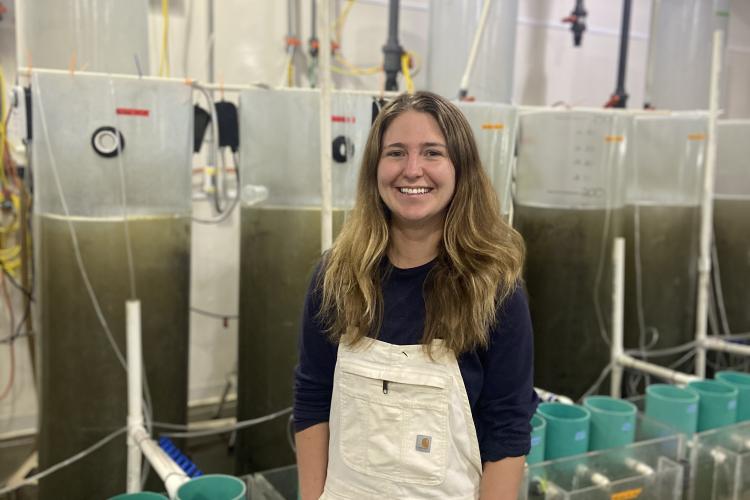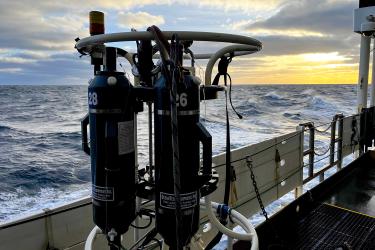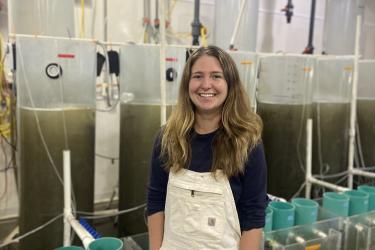The Atlantic surfclam is a shellfish species recognized for their large shells that wash up on beaches along the east coast of the United States. I’ve been collecting surfclam shells along New Jersey’s beaches since I moved here a year ago to work at the Rutgers University Haskin Shellfish Research Lab. Here, I research how changing ocean conditions will impact this important species.
Beyond being a great beach souvenir, surfclams support a valuable commercial fishery in the mid-Atlantic region. They are used in regional dishes such as clam chowder. The mid-Atlantic, home to many important marine species including the surfclam, is changing rapidly because of global climate change. Ocean warming and acidification are particularly significant concerns for shellfish.
Warming ocean temperatures directly impact shellfish growth rates and very high temperatures can be lethal to shellfish.Subtle changes in ocean chemistry including pH can also cause physiological stress and impact the integrity of surfclam shells.
Before moving to New Jersey, I lived and studied in Nova Scotia, Canada. Having grown up in a coastal community, I enjoy eating seafood. I am interested in how climate change will impact the way that we fish and grow our seafood. Although we often think of northern waters as being cold, the Atlantic Ocean along the Canadian coastline is also changing rapidly in terms of temperature and ocean acidification. In Nova Scotia, I studied the effects of climate change on shellfish aquaculture (mussels, oysters, and scallops), and how shellfish feeding rates vary under different environmental conditions. At Rutgers, in collaboration with a team from the NOAA Milford Lab, I am continuing this research while working with a species uniquely important to New Jersey.
In lab studies, scientists often examine only one environmental variable at a time (for example, temperature). The goal of our first study is to examine the simultaneous effects of both high temperatures and low pH on surfclam. Both temperature and ocean chemistry are changing in their environment.
At the Rutgers Aquaculture Innovation Center, we keep small surfclams in blue cylinders during this exposure experiment. Surfclams are exposed to one of nine conditions in a flow-through seawater system using natural seawater from the Cape May Canal, New Jersey. These conditions are a combination of one of three temperatures: ambient, ambient + 2°C, or ambient + 5°C, and three pHs: ambient (~7.7), high (~7.9), or low (~7.5). Instead of maintaining constant experimental conditions, our experiment fluctuates with the incoming seawater across tidal and day/night cycles, more closely reflecting the varying natural conditions that surfclams experience.
After the 6-week experiment, we measured:
- Growth
- Shell strength
- Gene expression
- Metabolic and feeding rates
This allowed us to determine the impacts of combined temperature and pH stress on surfclams.
This study will help us predict how surfclams will grow and survive in a rapidly changing ocean. In future studies, we are interested in conducting similar experiments on surfclams that have been selectively bred with a high thermal tolerance, or with surfclams from more northern waters. We will compare these results to the results of our initial study. Stay tuned!






